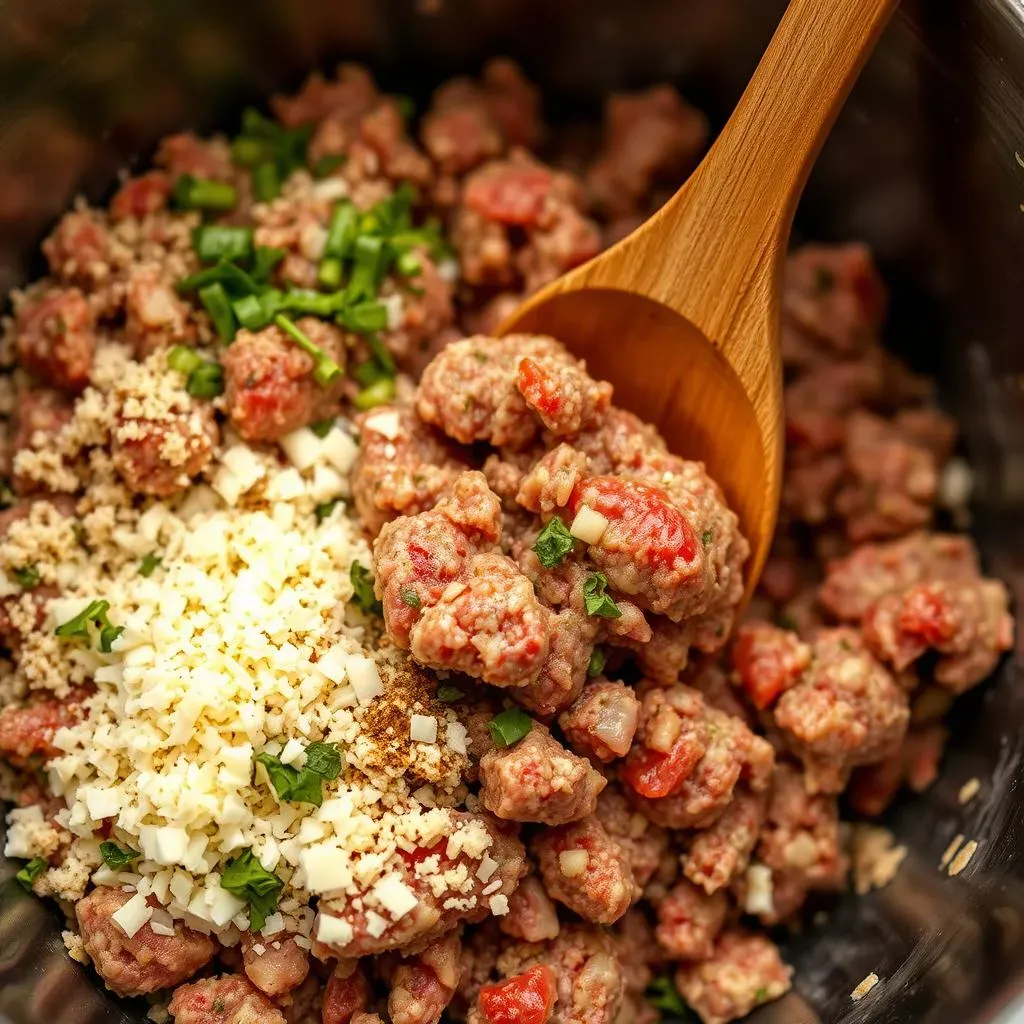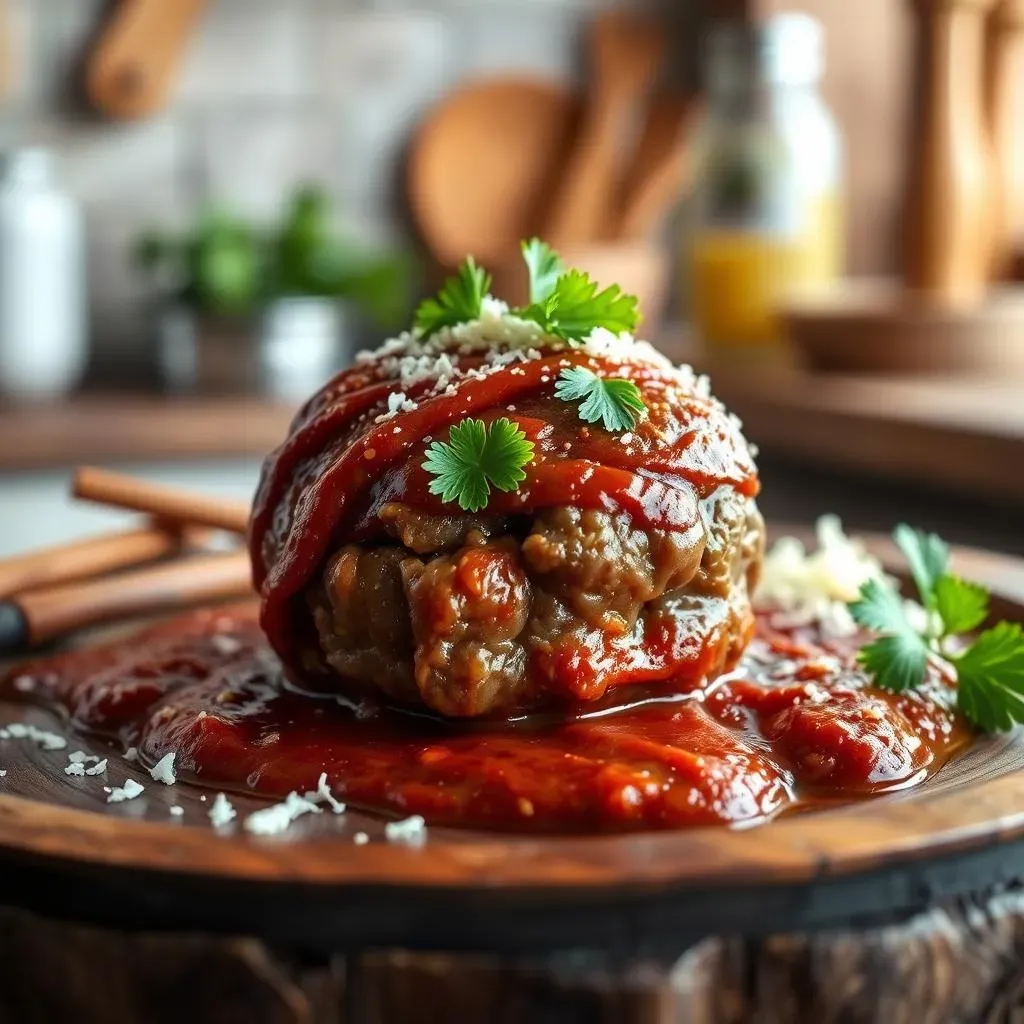Table of Contents
Are you ready to ditch those bland, dry meatballs and discover the joy of a truly *good beef meatball recipe*? This isn't just another recipe; it's a journey into the heart of meatball mastery. We'll explore the secrets to crafting a perfect meat mixture, bursting with flavor and juicy texture. Forget everything you thought you knew about meatballs – this guide will show you how to achieve that perfect balance of herbs, spices, and the right cut of beef. Then, we’ll dive into the art of sauce selection, exploring various options to complement your perfectly formed meatballs. From classic marinara to unexpected flavor combinations, you'll learn how to elevate your culinary game. Finally, we’ll cover serving suggestions, ensuring your good beef meatball recipe becomes a culinary triumph, whether you’re serving it up with pasta, in a sub, or as a standalone appetizer. Get ready to impress your family and friends with meatballs so good, they'll be asking for seconds (and thirds!). This comprehensive guide covers everything from the initial meat mixture to the perfect finishing touches, ensuring your meatball journey is a resounding success. Let's get started!
Secrets to a Good Beef Meatball Recipe: Mastering the Meat Mixture

Secrets to a Good Beef Meatball Recipe: Mastering the Meat Mixture
The Ground Beef Conundrum: Choosing the Right Cut
Let's start with the star of the show: the ground beef. Not all ground beef is created equal. For the best results in your good beef meatball recipe, you want a blend that offers both flavor and moisture. A higher fat content (around 80/20) will yield incredibly juicy meatballs, while leaner options (90/10) can result in a slightly drier texture. Experiment to find your ideal balance. Many people prefer a mix of ground beef and pork for added richness. Check out our post on for more detailed guidance.
Consider the added benefits of using fresh, high-quality ground beef. The flavor difference is truly remarkable. You can also explore different cuts, such as chuck or sirloin, to see how they impact the final result. Don't be afraid to experiment! A little exploration can lead to your signature meatball masterpiece. Speaking of experimentation, have you ever tried adding a little bit of finely grated pork fat to your mix? It’s a secret weapon for extra juicy meatballs. For another delicious variation, check out our .
Ground Beef Type | Fat Content | Meatball Texture |
|---|---|---|
80/20 | High | Juicy, tender |
90/10 | Lean | Firmer, slightly drier |
Beyond the Beef: The Power of Binding Agents
The secret to meatballs that hold their shape and stay moist lies in the binding agents. Breadcrumbs are the classic choice, absorbing moisture and adding structure. However, don't limit yourself! Consider adding finely grated parmesan cheese to your mix, not only for its flavor but also for its binding properties. A beaten egg acts as a glue, holding everything together. For gluten-free options, explore alternatives like almond flour or breadcrumbs made from gluten-free bread. To learn more about creating that perfect binding paste, check out our guide on .
Don't underestimate the impact of herbs and spices! Fresh herbs like parsley, oregano, and basil add depth and complexity to the flavor profile. Experiment with different combinations to discover your perfect blend. A little garlic and onion powder (or even finely minced fresh garlic and onion) can go a long way in enhancing the savory notes. Remember, even small adjustments can significantly alter the final taste. For those seeking a bolder flavor, consider adding some red pepper flakes for a hint of spice. If you're interested in exploring other flavor combinations, consider our article.
- Breadcrumbs (plain or Italian-seasoned)
- Parmesan cheese (finely grated)
- Egg (beaten)
- Fresh herbs (parsley, oregano, basil)
- Garlic and onion powder (or fresh minced)
The Art of Mixing: Technique and Texture
Now for the crucial step: mixing. The goal is to gently combine all the ingredients without overworking the meat. Overmixing can lead to tough meatballs. Use your hands to gently incorporate everything, ensuring an even distribution of flavors and binding agents. If the mixture feels too wet, add a little more breadcrumbs. If it’s too dry, add a touch of milk or water. The ideal consistency should be slightly sticky but not overly wet or dry.
Once you've achieved the perfect consistency, cover the mixture and refrigerate it for at least 30 minutes. This allows the flavors to meld and makes it easier to form the meatballs. Chilling the meat also helps prevent shrinkage during cooking. For those short on time, you can skip the chilling step, but the flavor will be slightly less developed. For those who want to make things ahead of time, check out our article on . You can also find tips for freezing your meatballs in our guide.
Elevating Your Good Beef Meatball Recipe: Sauce Selection and Cooking Techniques

Elevating Your Good Beef Meatball Recipe: Sauce Selection and Cooking Techniques
Sauce Selection: Beyond the Marinara
Let's talk sauce! While classic marinara is a timeless pairing for beef meatballs, don't be afraid to explore other options. A creamy mushroom sauce adds an earthy richness, complementing the savory notes of the meat. For a tangy twist, consider a lemon-herb sauce, or for something spicier, a creamy jalapeño sauce could be a fantastic choice. Don't forget about the versatility of a simple tomato-basil sauce – it’s a light and refreshing alternative to heavier sauces. The possibilities are endless, so get creative!
Thinking outside the box is key to creating truly unique and memorable dishes. Have you ever considered a creamy pesto sauce? Or perhaps a spicy arrabbiata sauce for a bold kick? The right sauce can transform a simple meatball into a culinary masterpiece. For more sauce inspiration, check out our post. Remember, the best sauce is the one that complements your personal taste.
- Marinara Sauce
- Creamy Mushroom Sauce
- Lemon-Herb Sauce
- Spicy Jalapeño Sauce
- Tomato-Basil Sauce
Cooking Techniques: From Oven to Pan
Now, let’s explore the best ways to cook your delicious meatballs. Oven baking is a classic method, yielding tender meatballs with a slightly crispy exterior. Simply arrange them on a baking sheet and bake until cooked through. For a richer flavor, try pan-frying them in a little olive oil until browned on all sides, then simmering them in your chosen sauce. This creates a beautiful caramelization and intensifies the flavors. For a hands-off approach, slow cooking is a great option. Simply add the meatballs to your slow cooker with your sauce and let them simmer for several hours.
Each cooking method offers a unique flavor profile and texture. Experiment to find your preferred method. For instance, broiling can create a beautifully browned crust, while grilling adds a smoky char. No matter your chosen method, remember to use a meat thermometer to ensure the meatballs reach an internal temperature of 160°F (71°C) for food safety. For more tips and tricks, check out our page. You'll find detailed instructions and helpful advice to ensure your meatballs are cooked to perfection every time.
Cooking Method | Pros | Cons |
|---|---|---|
Oven Baking | Easy, even cooking | Can be slightly drier |
Pan-Frying | Crispy exterior, rich flavor | Requires more attention |
Slow Cooking | Hands-off, tender meatballs | Can be less flavorful |
Serving Up Success: The Best Ways to Enjoy Your Good Beef Meatballs

Serving Up Success: The Best Ways to Enjoy Your Good Beef Meatballs
Meatball Mains: Pasta Perfection and Beyond
Let's face it, spaghetti and meatballs is a classic for a reason! The rich tomato sauce clings beautifully to the pasta, creating a harmonious blend of flavors and textures. But don't stop there. Consider serving your meatballs over other pasta shapes like penne, rigatoni, or even creamy polenta for a unique twist. For a lighter option, try serving them over zucchini noodles (zoodles) or a bed of roasted vegetables. The possibilities are endless!
For a heartier meal, try adding your meatballs to a hearty beef meatball soup. Or, if you’re feeling adventurous, stuff your meatballs into bell peppers for a unique and flavorful dish. For those who love a comforting casserole, a beef meatball casserole is always a winner. Check out our for inspiration.
- Spaghetti
- Penne
- Rigatoni
- Polenta
- Zucchini Noodles
- Roasted Vegetables
Meatball Marvels: Subs, Sliders, and More
Who doesn't love a juicy meatball sub? The combination of tender meatballs, melted cheese, and flavorful sauce in a crusty roll is pure comfort food. But why stop at subs? Meatball sliders are a fun and easy appetizer or snack, perfect for parties or casual gatherings. You can also get creative with your meatball presentation by adding them to pizzas, salads, or even creating unique meatball appetizers. The only limit is your imagination!
Looking for something quick and easy? Meatball sliders are a fantastic option. For a more substantial meal, try creating a beef meatball pizza, or for a unique take on a classic, consider a beef meatball stuffing. If you're looking for low-carb options, check out our . There are countless ways to enjoy your perfectly crafted meatballs, so don't be afraid to experiment and discover your own favorites. And if you have leftover meatballs, don't worry! You can easily freeze them for later use – see our guide on .
Serving Suggestion | Best For |
|---|---|
Meatball Sub | Comfort food, casual meals |
Meatball Sliders | Appetizers, parties |
Meatball Pizza | Creative twist on a classic |